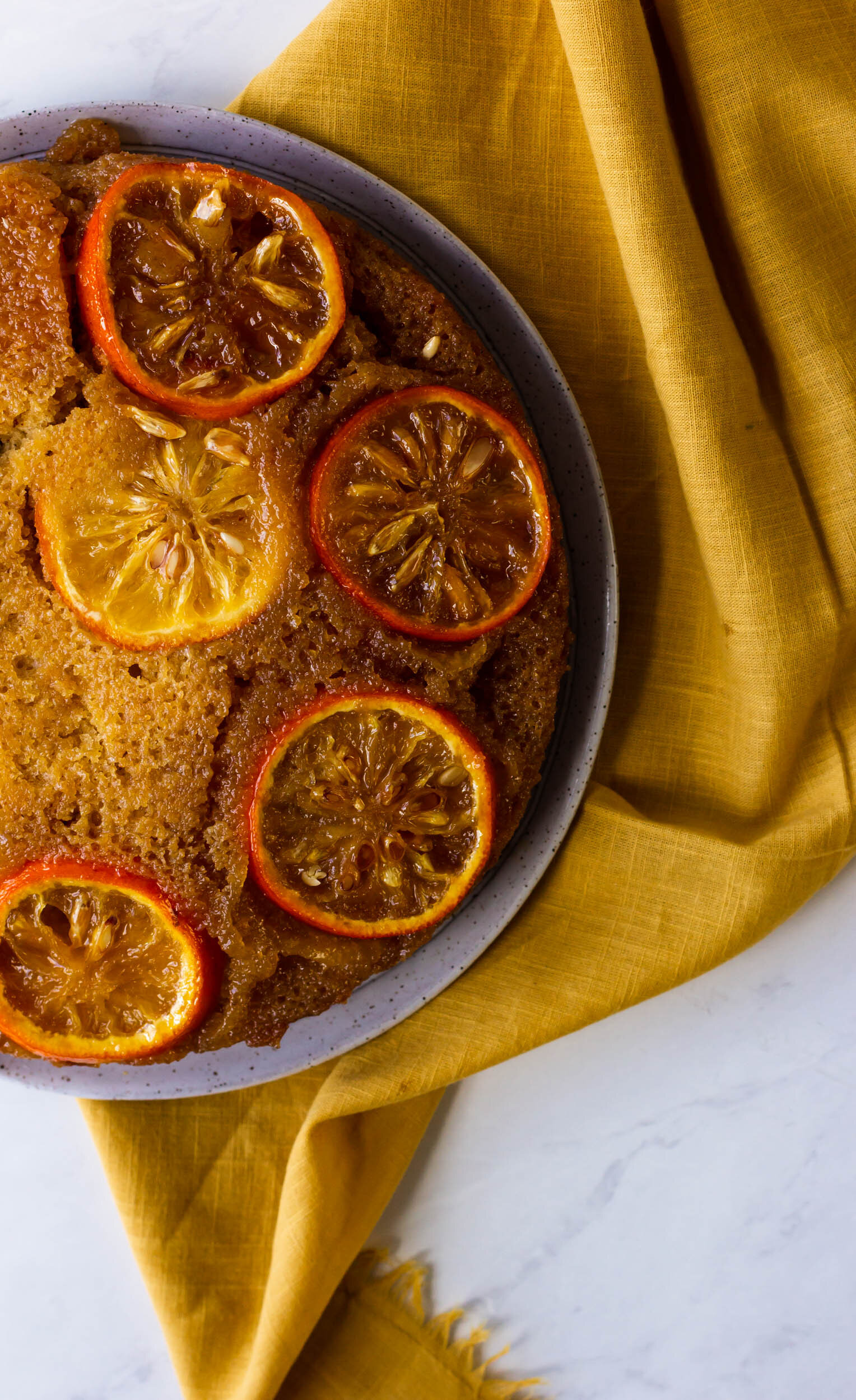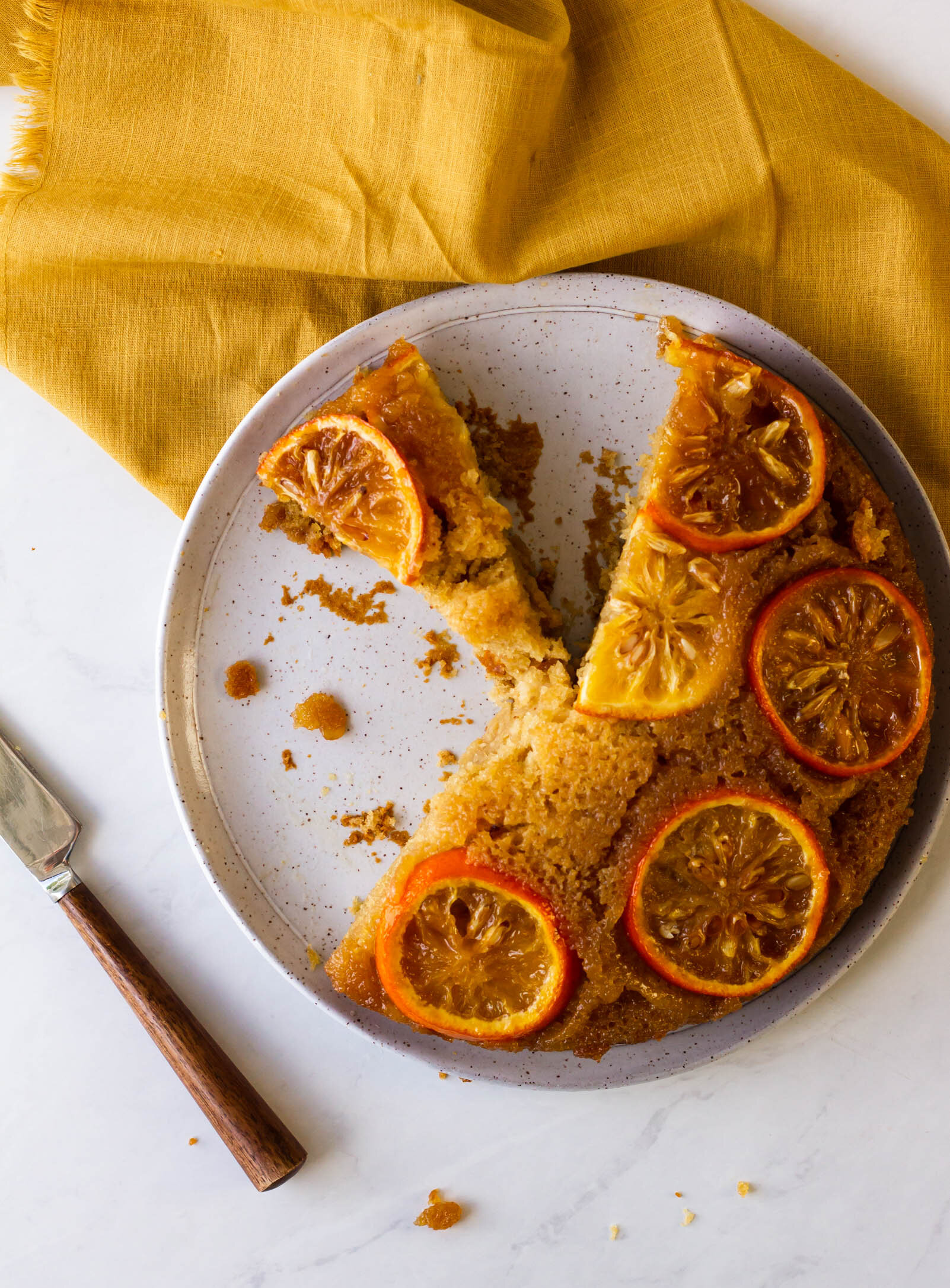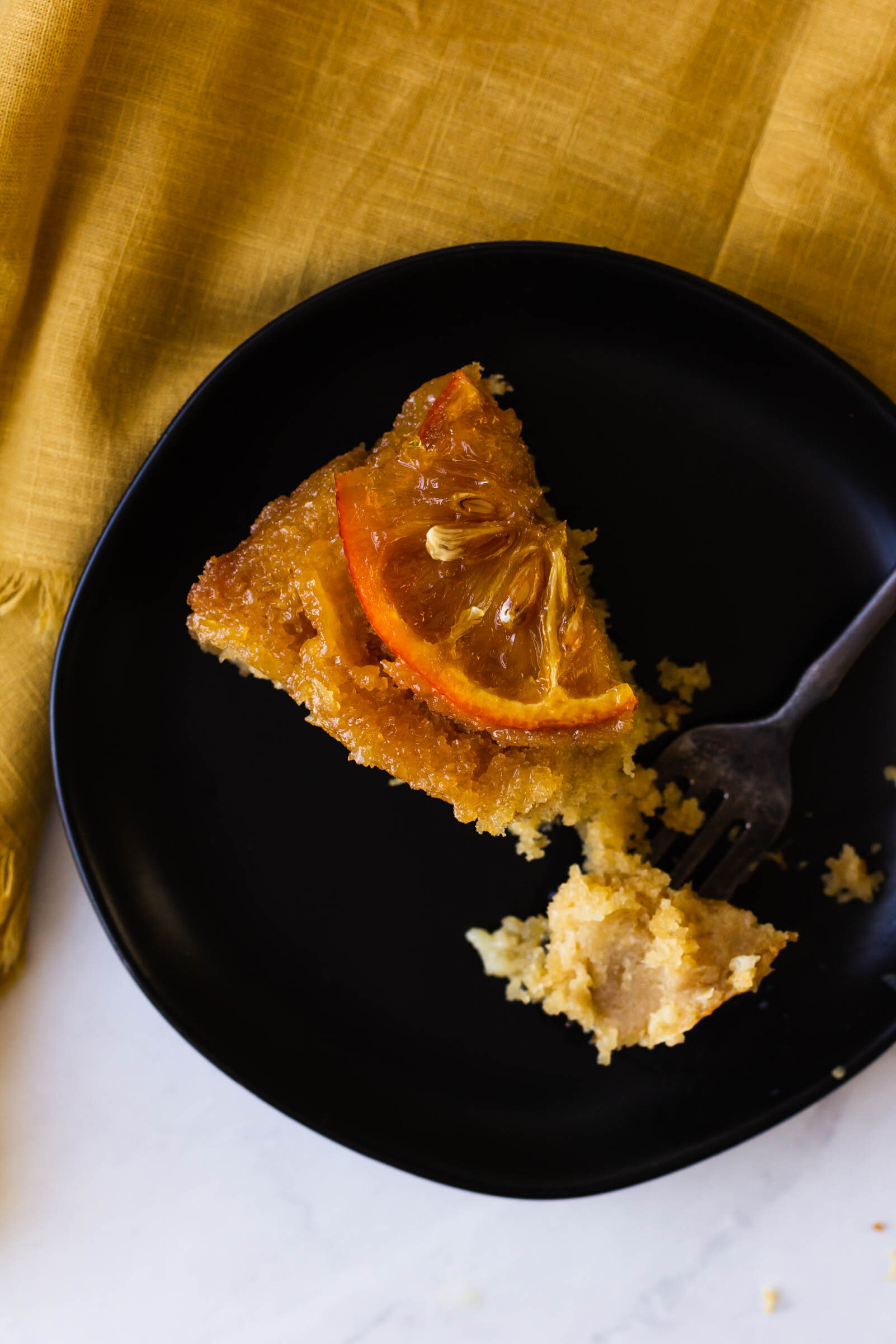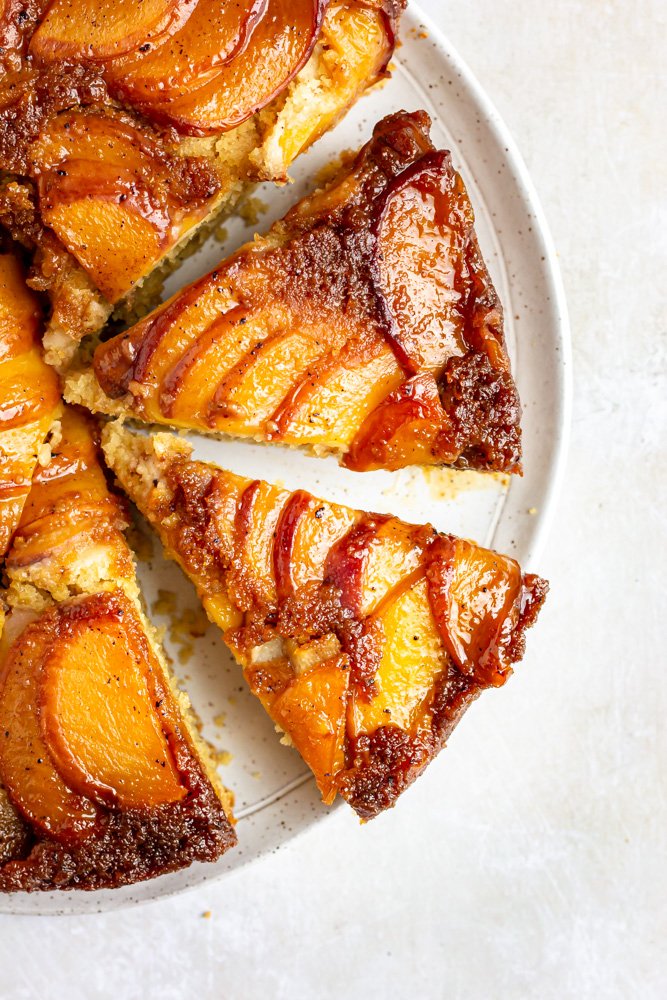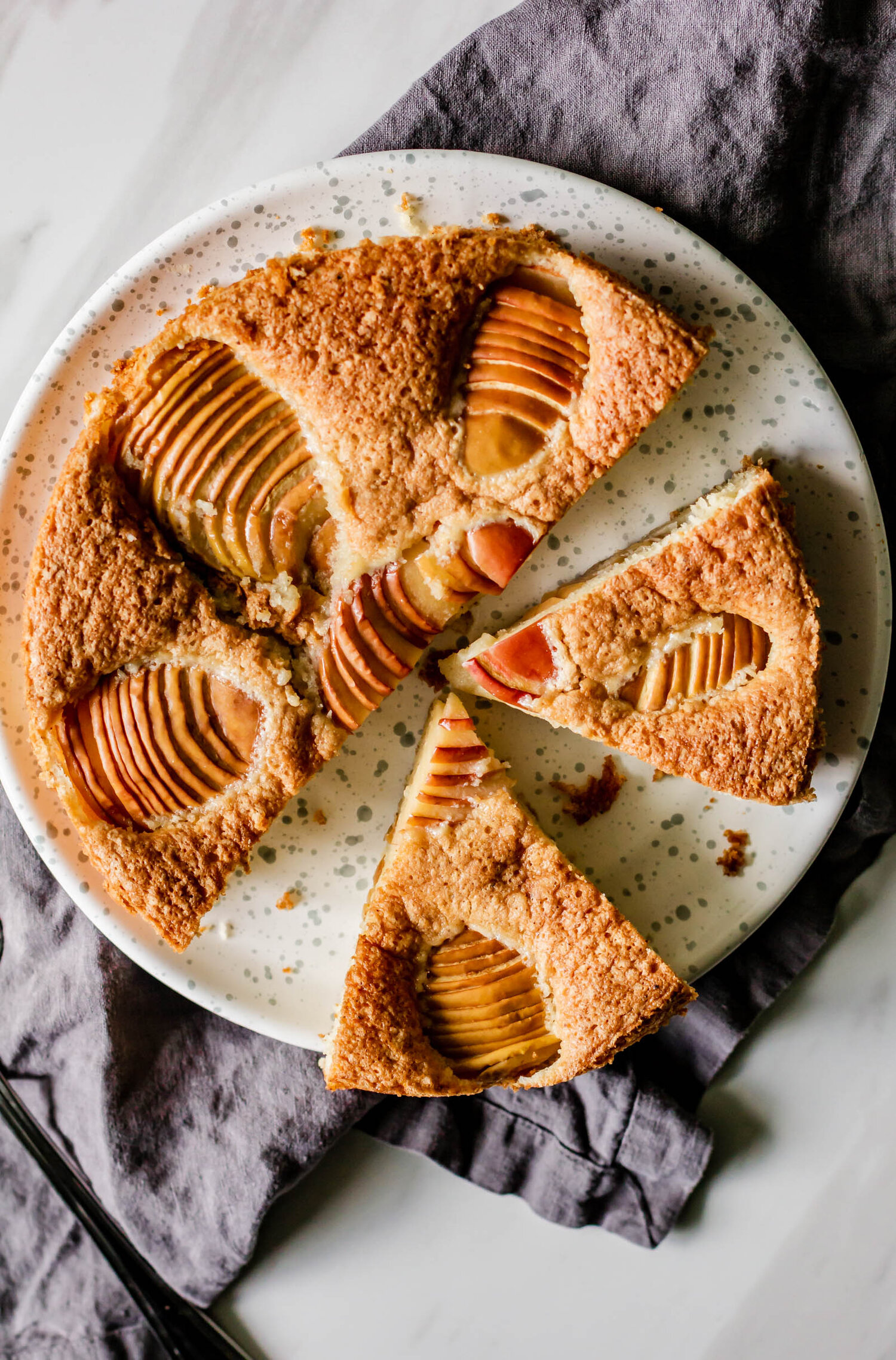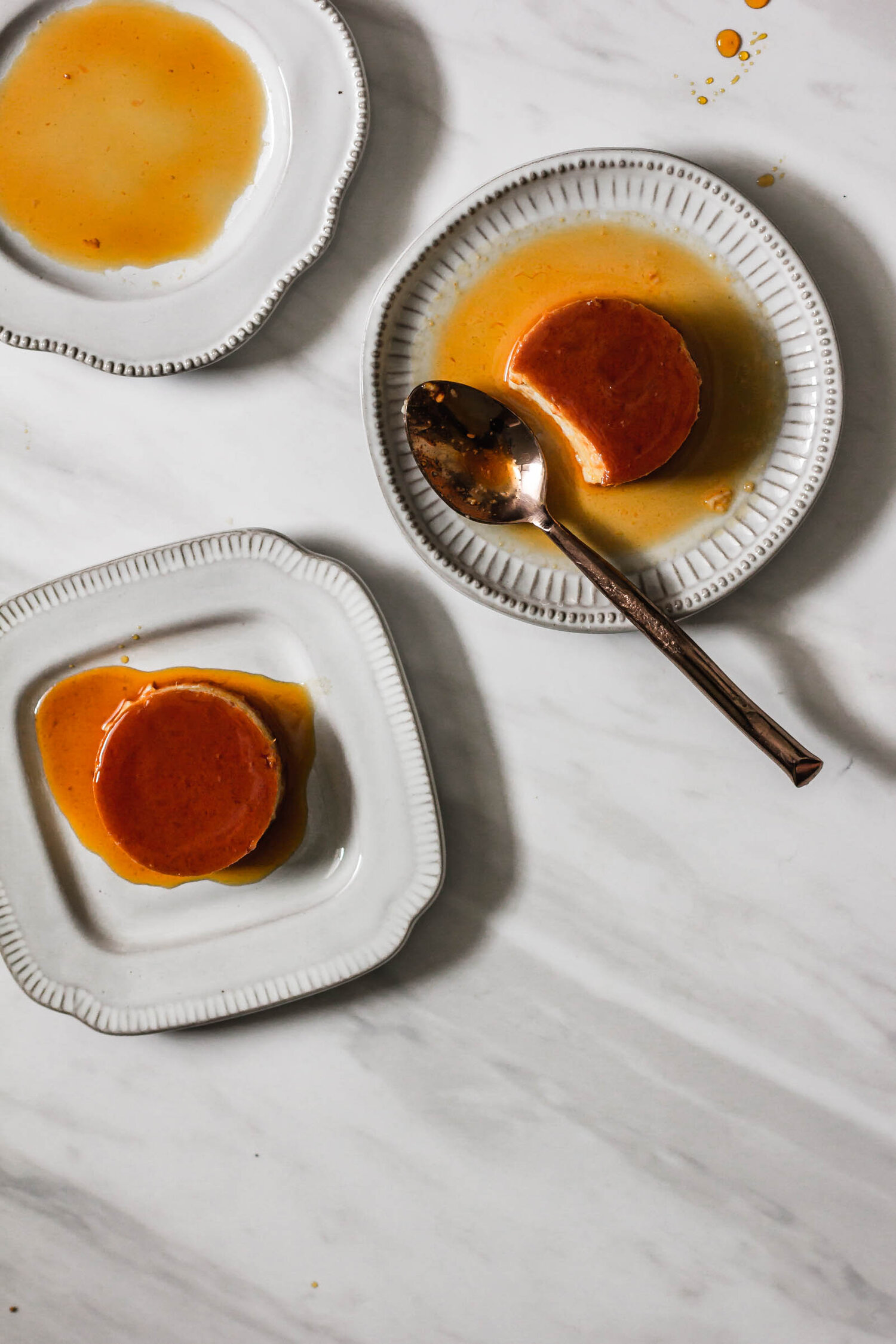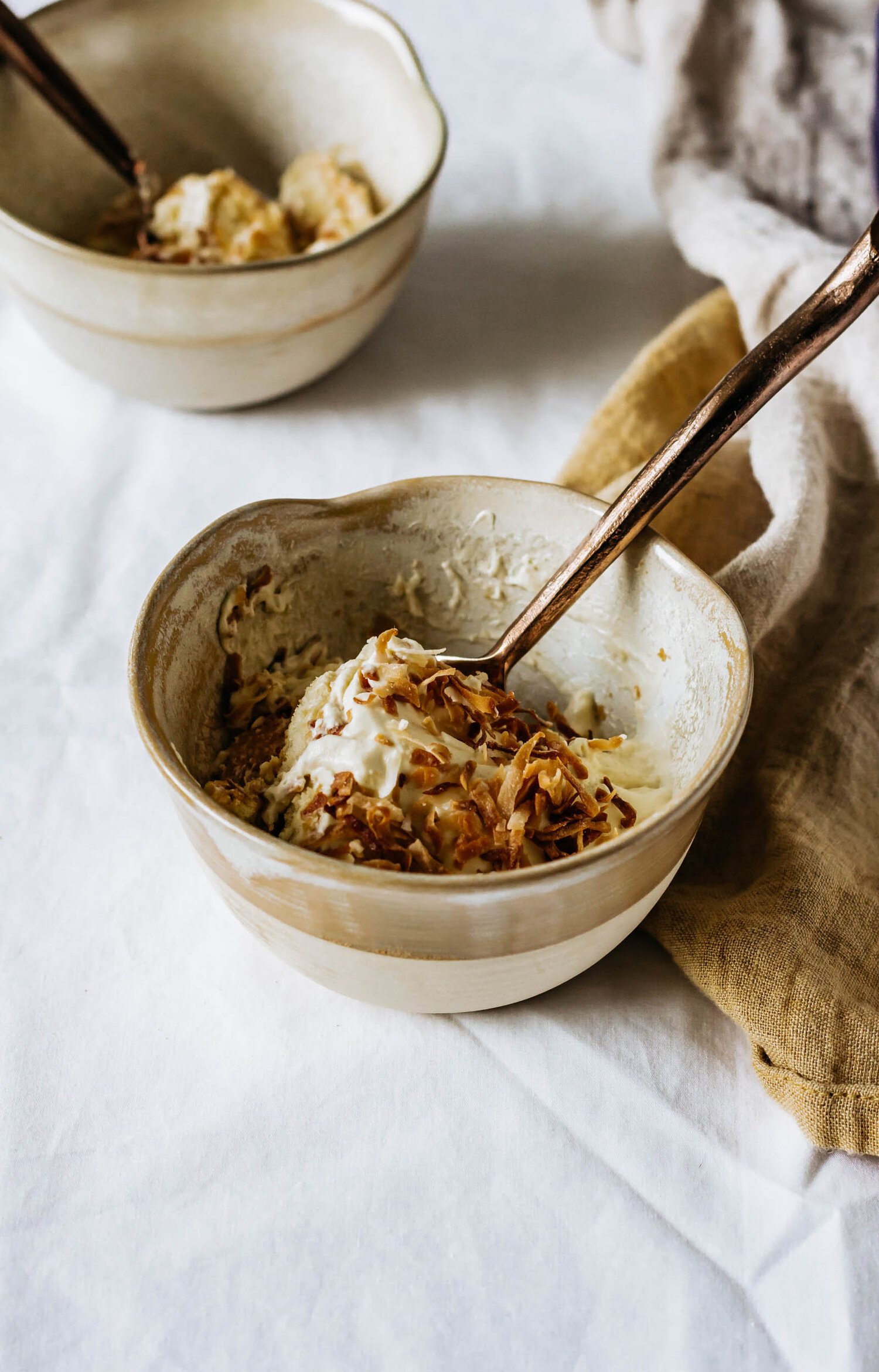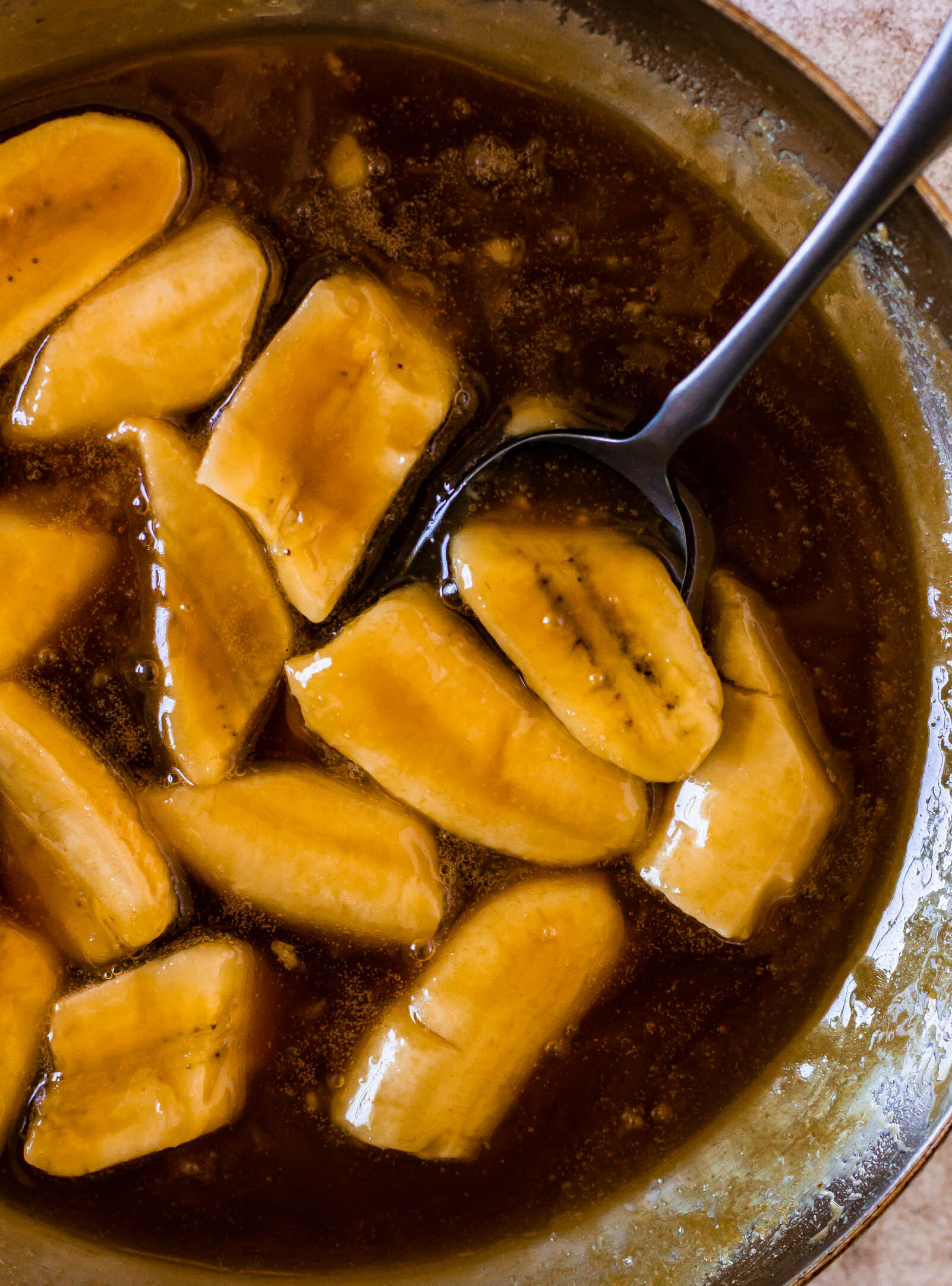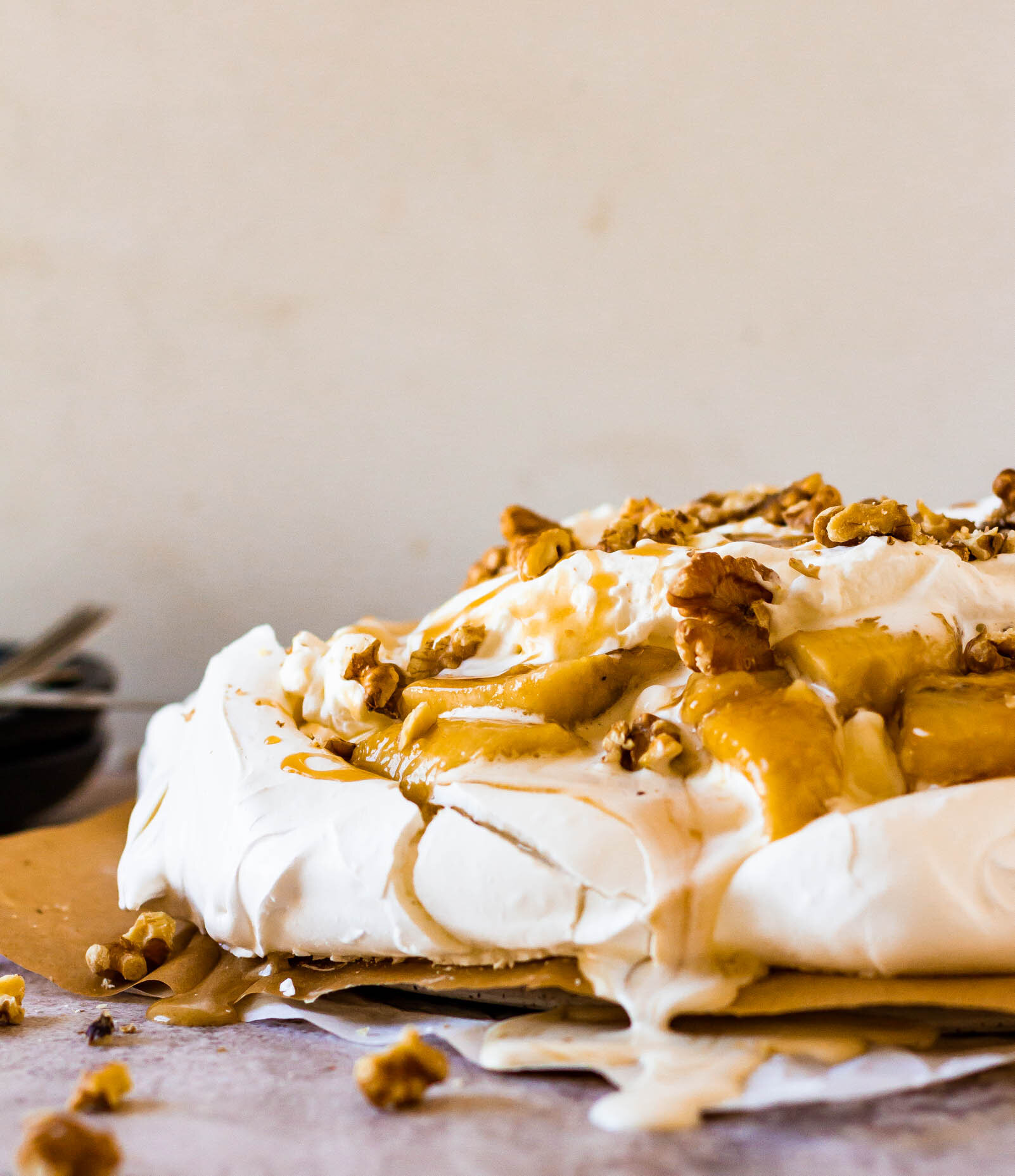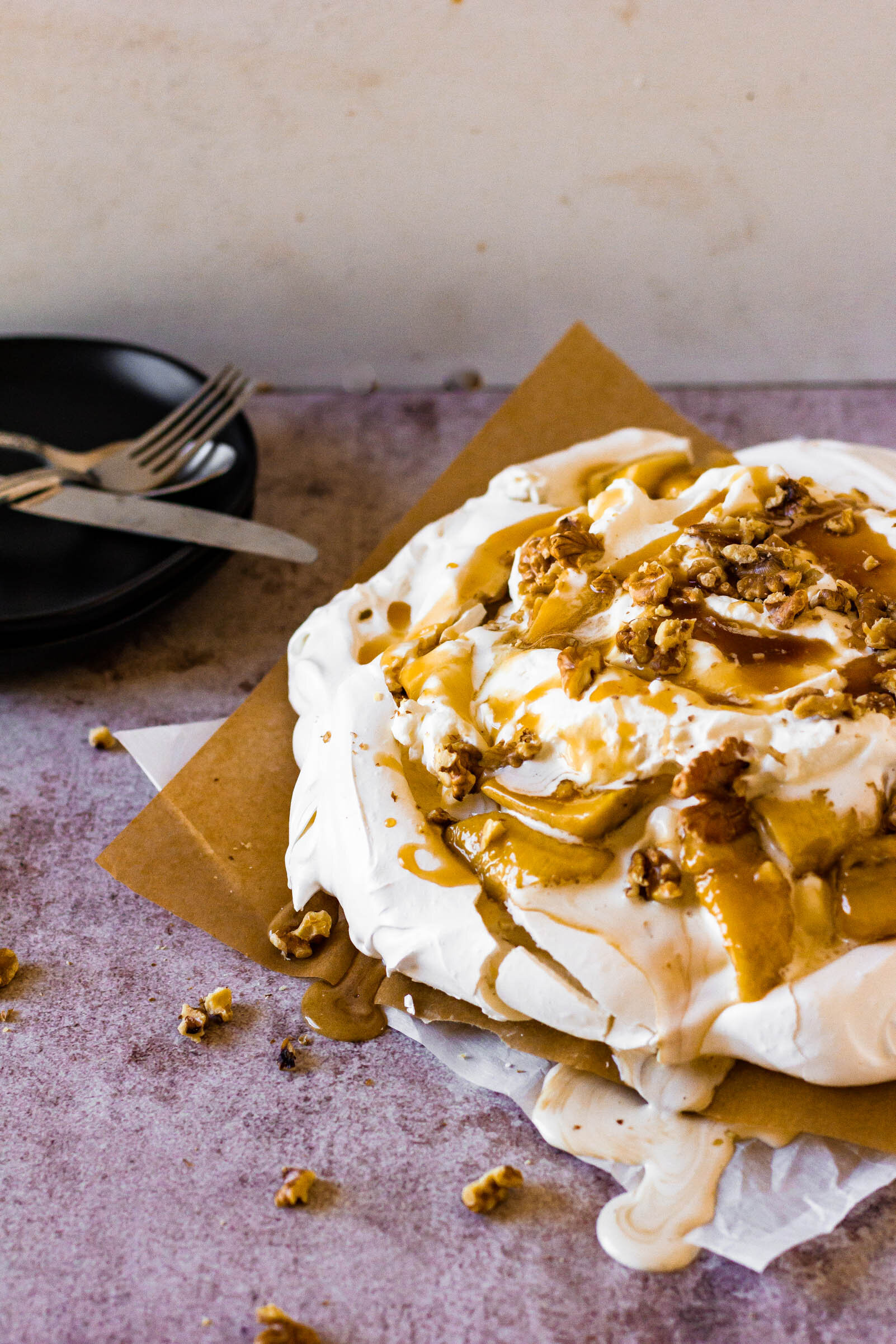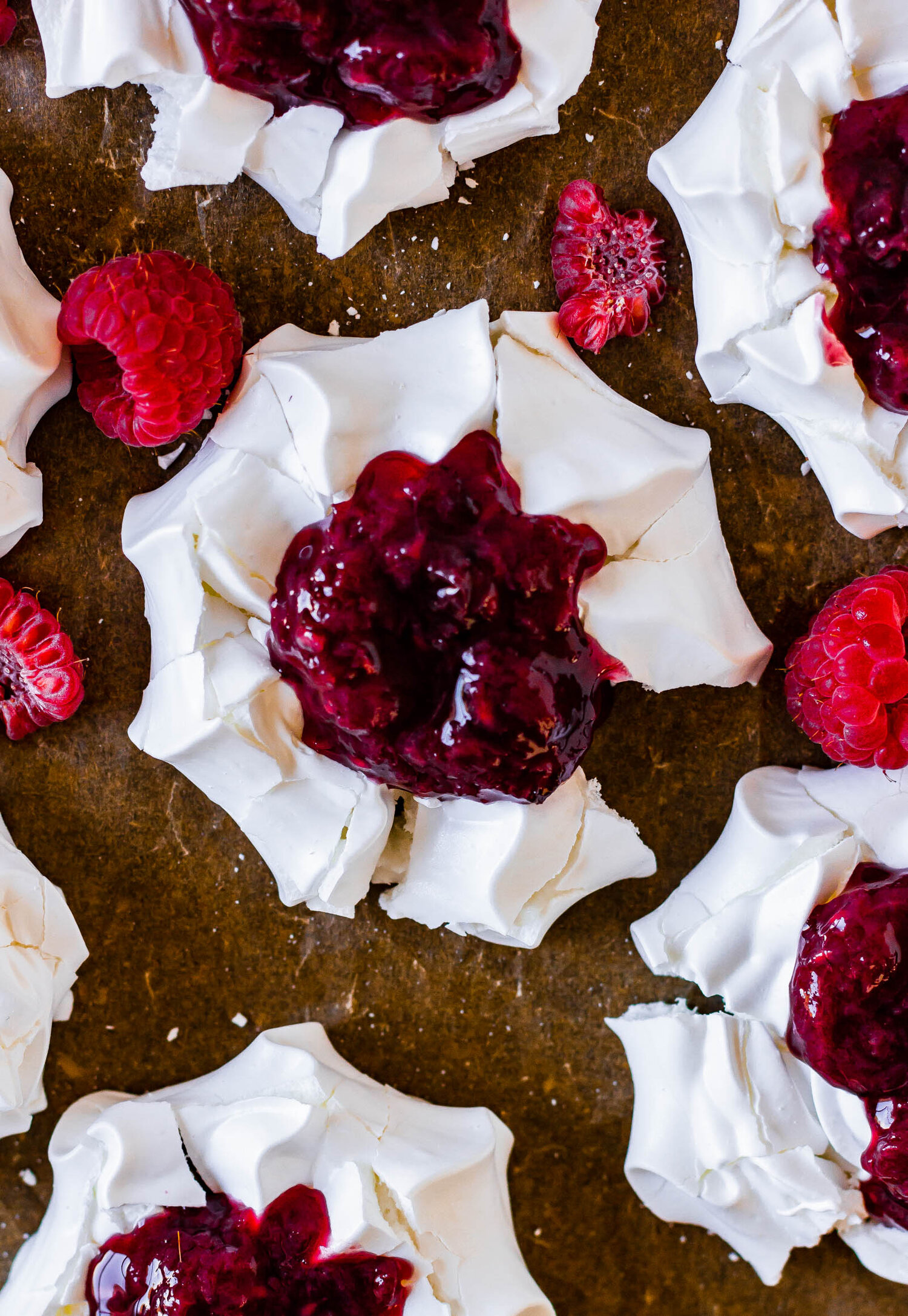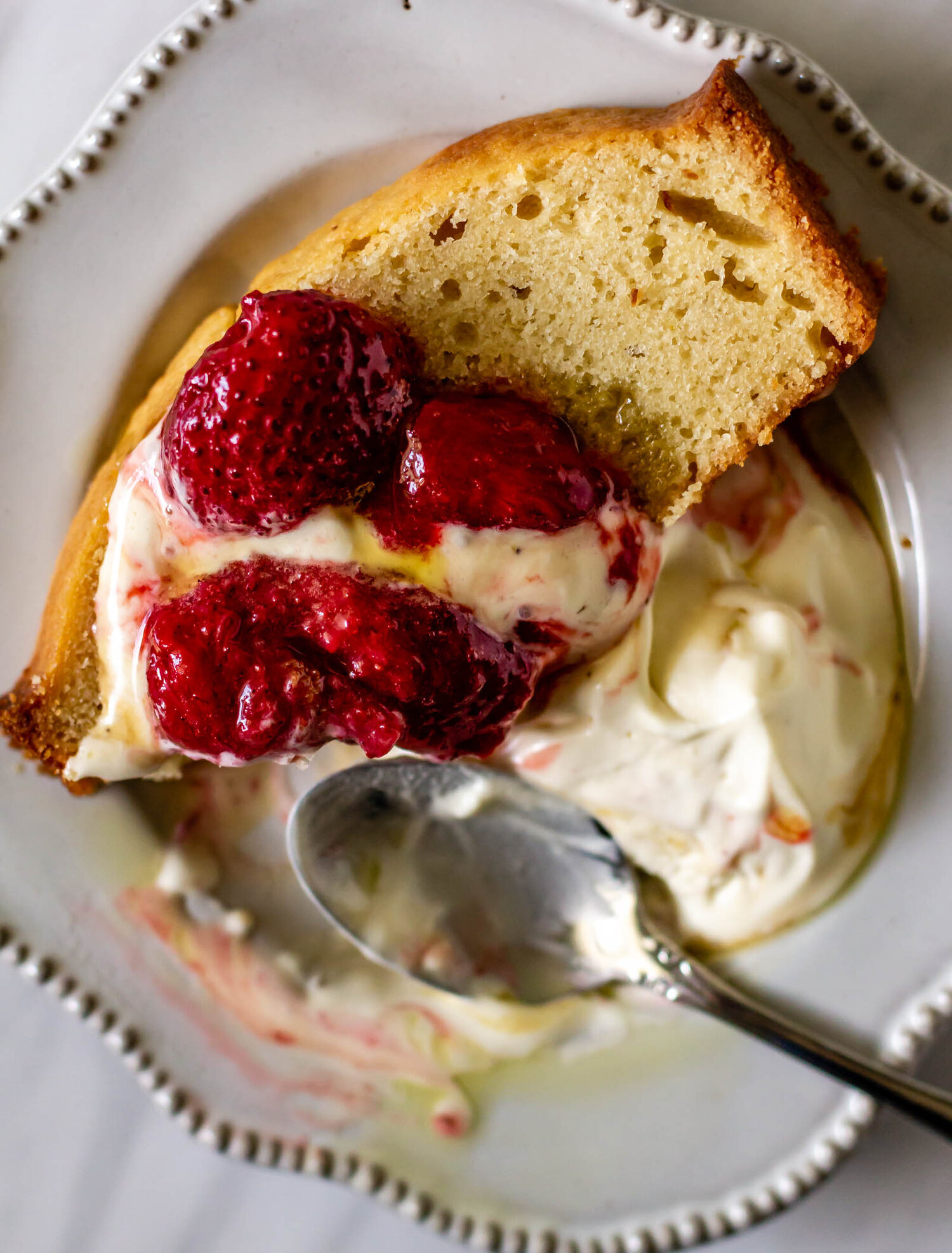Sour Orange and Tequila Upside Down Cake
/I’ve been doing some research lately on SEO, an aspect of internet business I am greatly lacking in. Apparently crucial to running a successful blog, SEO or search engine optimization is a technical, behind-the-scenes area that uses specific words and plugins to help Google easily read your content and push your blogs and recipes to the top of the Google search lists. This is obviously super important for bloggers and recipe developers as people actually need to see and read our recipes in order for us to run a mildly successful recipe writing business. It’s an area that I will admit, I am not strong in, and could use a little extra support in since most of my posts ring in somewhere near the bottom of the billion pages of Google search results, but if I’m being honest, there’s something about the whole SEO optimization thing that feels uncomfortable to me. One of the things I’ve read over and over again is that you should be performing key word searches before creating recipes so that you’re able to see the types of recipes people are already Google-ing and then create recipes based off of that. This idea feels so inauthentic to me! My whole mission in life is teaching people how to elevate their baking, using creative flavors and ingredients that are a bit unexpected and teaching techniques that the average home baker may be unfamiliar with. Often times, this means that the types of recipes people search for are recipes that they are already familiar with like chocolate chip cookies or brownies or something with a peanut butter chocolate combination. Not many people sit down and search “sour orange and tequila upside down cake”, not because they don’t like it or it’s a bad recipe, but simply because it’s a flavor combination that they didn’t know they needed! And I love love love introducing people to baked goods that they didn’t know they needed. But that does put me in a bit of a pickle, because in order to get my quirky recipes out there, I need to get people to my blog because what is the point if no one even ever sees them. Most of this rambling is me processing and getting all my feelings out into words (which is also an SEO no-no— don’t talk about things that aren’t directly related to the recipe, but I’m a real person and since I pay to keep this website up and running, I think I can occasionally go off-topic.) All of this to say, I’m going to continue sharing weird flavor combinations and encouraging you to bake out of your comfort zone, but I may include a s’mores cookie bar (a recipe I’m currently working on so keep an eye out) every now again to keep the internet happy.
let’s talk about cake
I’ve been planning a version of this Sour Orange and Tequila Upside Down Cake in my head for months. If you know me, you know I LOVE a good upside down cake. I even wrote a whole little e-book discussing how wonderful upside down cakes are at showcasing your fun produce finds—if you don't have a copy, what are you waiting for?! I also saw a picture of a Salted Pineapple and Mezcal Cake on What’s Cooking Good Looking’s site a few months ago and ever since then, I’ve been waiting for my perfect boozy produce cake to arrive. Then I got sour oranges. They are tart and slightly bitter, similar to lemons, but with all of the floral brightness of oranges and they were perfect!
The cake itself is a rendition of a base cake I use in a bunch of different recipes. It’s easy to throw together, doesn’t use a mixer, and can be adapted in all sorts of ways. The sour oranges are marinated in tequila and then cutely arranged into a layer of brown sugar caramel, topped with cake batter and then baked.
When testing this recipe, I was a little frustrated. Everything tasted perfect, but my oranges decided to do a little slip-n-slide action and it did not come out as pretty as I had hoped. I toyed with the idea of re-doing it for photogenic purposes but decided against it for two reasons: 1) I was all out of sour oranges and it’s not easy to get your hands on more. I could have done the cake just as easily with blood oranges or sumo or any other citrus, but I really loved the sour orange flavor and I wasn’t quite ready to give that up. 2) Part of me running this blog is to teach you how to make really delicious desserts at your house and a piece of that is making desserts accessible. If everything that I produce is a work of art and looks flawless, that’s really not realistic to the home kitchen. Home kitchens are where we make really tasty food that isn’t always beautiful and that is a-okay! So I promise you that I am a real person whose oranges don’t do exactly what I want every time. I also promise you that this is a great cake recipe that will produce a great cake in your kitchen, but if your baked goods don’t always look like little airbrushed magazine photos, that’s okay! Keep on baking!

Sour Orange and Tequila Upside Down Cake
Ingredients
- 2 sour oranges*, thinly sliced
- 1/3 cup tequila
- 2 cinnamon sticks
- 1/2 cup (113 g) unsalted butter
- 1/2 cup (110 g) brown sugar
- 1 tsp kosher salt
- 1/2 cup (113 g) unsalted butter
- 1 1/2 tsp vanilla extract
- 2 cups (240 g) all purpose flour
- 1/2 cup (100 g) granulated sugar
- 1/2 cup (110 g) brown sugar
- 1/2 tsp ground cinnamon
- 1/2 tsp baking powder
- 1/2 tsp baking soda
- 3/4 tsp kosher salt
- 1 cup (227 g) buttermilk, at room temperature
- 2 large eggs
Instructions
- The night before making the cake, combine sour orange slices, cinnamon sticks, and tequila in a bowl. Cover tightly and let marinate overnight in the refrigerator.
- Preheat the oven to 350° F. Grease a 9” springform cake pan and line the bottom with parchment paper. Set aside.
- In a large skillet set over medium high heat, melt 1/2 cup of butter. When the butter is melted, add the brown sugar and cook, whisking occasionally, until the brown sugar is dissolved and the mixture is bubbly and homogenized. Whisk in the salt and then pour the caramel mixture into your prepared cake pan.
- Remove the orange slices from the marinade and place in an even layer on top of the caramel in the prepared cake pan. Discard cinnamon sticks and save leftover tequila marinade for the cake batter.
- In a small saucepan, place the remaining 1/2 cup of unsalted butter and cook over medium-high heat, swirling occasionally, for 5-7 minutes, until the butter is foamy and fragrant, and has little browned specks. Set aside to cool.
- In a large mixing bowl, whisk together flour, sugar, brown sugar, cinnamon, baking powder, baking soda, and salt.
- In a large measuring cup, whisk together buttermilk, eggs, vanilla, and reserved tequila marinade until smooth and well-combined.
- Pour the wet ingredients into the bowl with the dry ingredients and whisk until the batter is well combined and no dry streaks remain. Whisk in the browned butter. Pour the batter over top of the orange slices.
- Place your cake pan on a parchment-lined sheet tray to catch any overflowing caramel, and bake for 35-40 minutes, until a knife or toothpick inserted in the center of the cake comes out clean.
- Let the cake cool in the pan for 15-20 minutes, until warm enough to handle, and then carefully invert the cake onto a plate. Serve warm.
Notes:
If you can't find sour oranges, don't fret! You can substitute another type of orange, like blood orange, or navel orange or cara cara in this cake. You could even play around with some other citrus (I bet limes would be fun) or even pineapple slices. Orange peels are edible, just make sure that you slice them thinly enough that they are able to soften completely during the baking time.



